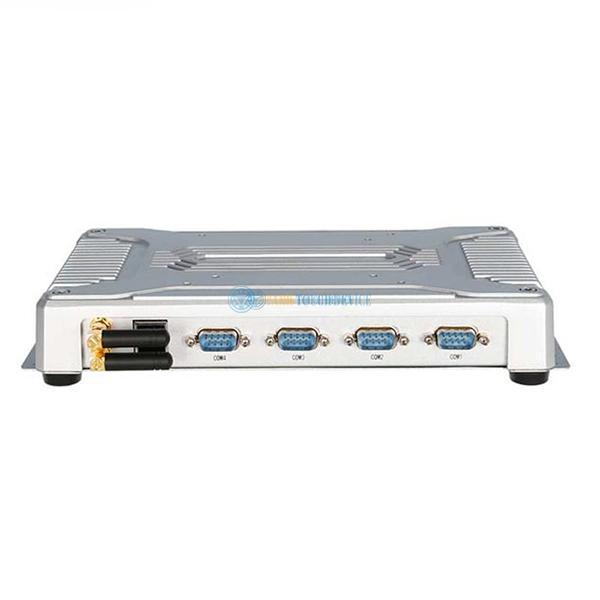Welcome STARK TOUCH DEVICE!
Solutions
Selection of fingerprint cleaning reagents for industrial control computer touch screens
Effective Reagent Selection for Cleaning Fingerprints on Industrial Control Computer Touchscreens
Industrial control computer touchscreens are frequently exposed to fingerprints, skin oils, and environmental contaminants, which can degrade visibility and affect touch sensitivity. Selecting the right cleaning reagents is crucial to maintain optimal performance without damaging sensitive components.

Understanding the Challenges of Touchscreen Contamination
Touchscreens in industrial environments are prone to accumulating fingerprints and oils due to constant human interaction. These residues can obscure display clarity, reduce touch accuracy, and even interfere with underlying circuitry if not properly cleaned. The choice of cleaning reagent must balance effectiveness in removing contaminants with safety for the touchscreen's materials.
Key Considerations:
Material Compatibility: Touchscreens often incorporate specialized coatings, such as anti-reflective or hydrophobic layers, which can be damaged by harsh chemicals.
Residue-Free Cleaning: Agents that leave streaks or residues may attract more dirt over time, exacerbating the problem.
Environmental Safety: In industrial settings, volatile organic compounds (VOCs) in cleaning products can pose health risks or react with other chemicals in the environment.
Criteria for Selecting Fingerprint Cleaning Reagents
1. Chemical Composition and Safety
Opt for cleaning reagents formulated with mild, non-abrasive ingredients. Alcohol-based solutions (e.g., isopropyl alcohol) are commonly used for their rapid evaporation and effectiveness against oils. However, ensure the concentration is below 70% to prevent damage to plastic or adhesive components. Avoid ammonia or bleach-based cleaners, which can degrade anti-glare coatings.
Example: A reagent with a pH-neutral formula is ideal for preserving the integrity of touchscreen surfaces. Look for products labeled "safe for LCD/LED screens" or "electronics-friendly."
2. Evaporation Rate and Residue
Fast-evaporating solvents minimize the risk of liquid seeping into the touchscreen's edges or under the bezel, where it could damage internal electronics. Slow-drying agents may leave streaks, requiring additional buffing.
Practical Tip: Test the reagent on a small, inconspicuous area of the touchscreen first. If residues persist after wiping, switch to a drier formulation.
3. Anti-Static Properties
Static electricity can attract dust to the touchscreen surface, leading to rapid re-contamination. Cleaning reagents with anti-static additives help repel particles, extending the time between cleanings.
Industry Insight: Some industrial-grade cleaners incorporate conductive polymers that dissipate static charges without leaving residues. These are particularly useful in dusty manufacturing environments.
Application Techniques for Optimal Results
Microfiber Cloth Pairing
Always use a lint-free, microfiber cloth to apply the cleaning reagent. Avoid paper towels or abrasive fabrics, which can scratch the touchscreen. Fold the cloth into a clean section for each wipe to prevent re-depositing dirt.
Step-by-Step:
Spray the reagent onto the cloth (not directly onto the screen) to control application.
Wipe gently in a circular motion, starting from the center and moving outward.
Use a dry section of the cloth to buff the screen to a streak-free finish.
Frequency of Cleaning
In high-traffic industrial areas, clean touchscreens daily or after each shift. For less demanding environments, a weekly cleaning schedule may suffice. Monitor for visible smudges or reduced touch responsiveness as indicators for more frequent cleaning.
Advanced Solutions for Stubborn Contaminants
Hydrophobic Coatings
For touchscreens prone to heavy fingerprinting, consider applying a hydrophobic or oleophobic coating after cleaning. These coatings repel oils and water, making future cleanings easier. However, ensure compatibility with the touchscreen's existing layers.
Application Note: Follow the manufacturer's instructions for coating application, as improper use can impair touch sensitivity.
Ultrasonic Cleaning (For Detachable Components)
If the touchscreen can be safely removed from the industrial control computer, ultrasonic cleaning with a specialized reagent can dislodge embedded dirt. This method is effective for components with intricate designs but requires careful handling to avoid damage.
Safety Precaution: Only use ultrasonic cleaners approved for electronics, as high-frequency vibrations can loosen solder joints or dislodge small parts.


